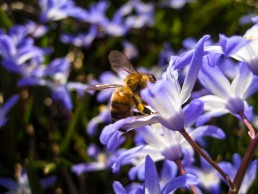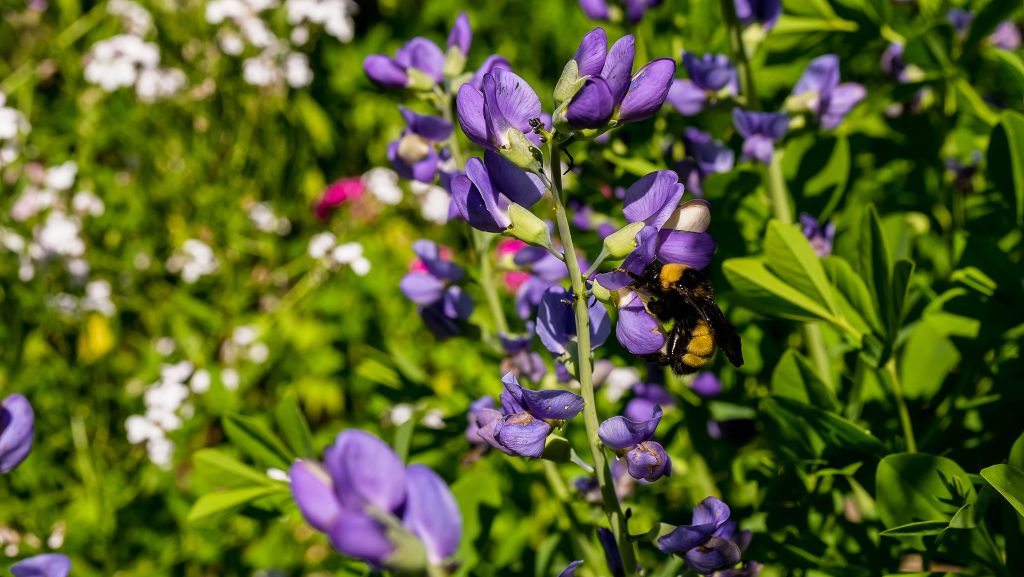The Hum of the Honeybee
Welcoming Spring
With Spring just around the corner, I can hardly wait to hear the songs of birds and the hum of the bees, both distant memories, yet sweet melodies to my ears. Living in Southern Ontario, even with the Spring Equinox only a couple of weeks away, it’s hard to imagine the sight of green, replacing the three feet of snow that still surrounds us. However, it’s during these colder months that I sit back and reflect on the early days of Spring where I can watch the world awaken yet again.
I often consider myself grateful to be a beekeeper, getting the chance to bear witness to the intimate life of a honeybee and a hive so full of life. That is, of course, only if we’re lucky enough to have them survive the winter. It is not uncommon for me to lose time in front of our hive, and I often think being around them on a busy midsummer’s day takes the busyness out of my mind.
If you sit with them long enough, they can become your teachers, as they have been for me. They have taught me how interconnected everything is, how far hard work can take you, and that a helping hand can go a longer way than the eye can see. One could argue they are selfless creatures, always putting the welfare of others before that of their own.
Becoming a Beekeeper
It happened by chance, as my partner and I inherited our colony with our first home. Though unplanned, this opportunity took me down a path of understanding on a deeper level where our food comes from, and how much different our world would look without our honeybees. They are a vital part of every ecosystem, among the many other invaluable pollinators that often go unnoticed.
It is said that one third of the food we know wouldn’t exist if it weren’t for our honeybees. Though it’s hard to miss something before it’s gone, I urge you to imagine a life without the delicious crunch of an almond, or the sweet pop of a fresh blueberry on a hot summer day – two of the many foods that surely we’d miss long after they’re gone.
Paying it Forward
With that, I encourage you to pay it forward, as the bees so humbly do for us, working hard all season long to bring us so many of the foods we love, medicine that we rely on, and a habitable and colourful landscape to live in.
In the end, supporting the livelihood of our bees supports that of our own, and there are so many ways to make a difference. Here are a number of ways that you can give back to the bees, keeping in mind that small actions have big impacts – just as the bees teach us:
1. Let your lawn go.
I always like to start by suggesting this one, as it requires no work but goes a long way. Letting any amount of land return to the wild encourages biodiversity and increases the likelihood of wildflowers to blow in and bloom, thus giving your bees more food for their post-hibernation hungry bellies. Trust me, the bees will thank you (and in my opinion, it’s far more beautiful).
2. Plant native wildflowers.
It’s hard to argue the beauty of a meadow abundant with blooming wildflowers, so find out which are local to you, and spread those seeds! This can also be a great opportunity to plant endangered natives species and support those at risk.
3. Avoid spraying.
Keeping things pesticide-free is a great way to avoid harmful chemicals, like glyphosate which wreaks havoc on the bees. Instead opt for more organic and natural solutions!
4. Support your local beekeepers.
Smaller scale beekeepers often have less demands to meet, thus more room to prioritize the health of their honeybees. This is a great way to support your local food systems and can go a long way for those suffering from seasonal allergies.
5. Giving bees trees.
Trees often get overlooked when we think about providing for the bees, but they’re a great source of nectar and provide them habitats, especially in the midst of continuous deforestation and development. Some trees, like Willows and Maples, make up some of the first food sources for them in the early days of Spring.
6. Choose wisely.
I like to say, if it comes in a squeeze bottle, it’s not the honey you want. This kind of honey is often pasteurized (a sterilization process that heats up the honey, thereby losing medicinal value) and contains fillers like corn syrup. Instead you can look for raw, unpasteurized honey – which is both better for you, and the environment.
Photos provided by Serena Mor



